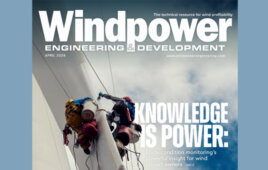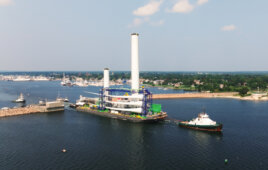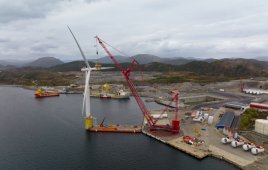Article shared with permission from Enerdatics
In Jun 2022, the U.S. Department of Energy announced a new federal-state partnership to expand the domestic supply chain for offshore wind. The government is endorsing a set of federal, state and mutual commitments to incentivize manufacturing facilities for components, port capabilities and logistics networks. The measures are aimed at helping the country achieve its goal of installing 30 GW of offshore wind capacity by 2030.
The recent announcement follows several pro-active steps already taken by the U.S. government, such as the approval of the nation’s first two commercial-scale offshore wind projects, Vineyard Wind and South Fork Wind, and the recent lease sale in the New York Bight — which solicited a record $4.37 billion of bids. The government has also announced plans for up to seven new auctions for offshore wind leases by 2025. Majority of the development pipeline is being spearheaded by strategic partnerships involving oil and gas companies, integrated utilities and PE firms. Some of the major initiatives include 4.4 GW of projects being developed by oil majors Equinor and BP and the 800-MW Vineyard wind project being built by Danish investment firm CIP and Spanish utility Iberdrola. Meanwhile, Shell is involved in 4.5 GW of projects with European utilities EDF, EDP Renewables and ENGIE.
The impacts of the progressive measures taken by the United States are somewhat offset by a host of national and global macroeconomic headwinds. Disruptions in supply chains and rising shipping costs are squeezing development timelines, which is having a domino effect on the signing of PPAs and the subsequent achievement of financial close. Permitting complexities further add to developer woes. Meanwhile, timing considerations, substantial development costs and significant project risks affect tax equity investments, a mechanism that has emerged as an increasingly attractive option for renewable projects. For offshore wind projects, since investment tax credits (ITCs) are preferred over production tax credits (PTCs), the tax equity’s portion of the capital stack will be a sizeable figure. Further, tax equity investors will need to invest at least 20% of their capital before any part of the project is in service.
Over the next few years, Enerdatics believes that constructive dialogue between developers, financiers and the administration will be critical to navigate through the various obstacles en route to positioning the United States as one of the world’s leading offshore wind markets.
For more updates, please follow us at Enerdatics.
The analysis is proprietary to Enerdatics, based on the current understanding of the available data. The information is subject to change and should not be taken to constitute professional advice or a recommendation.
Filed Under: Featured




